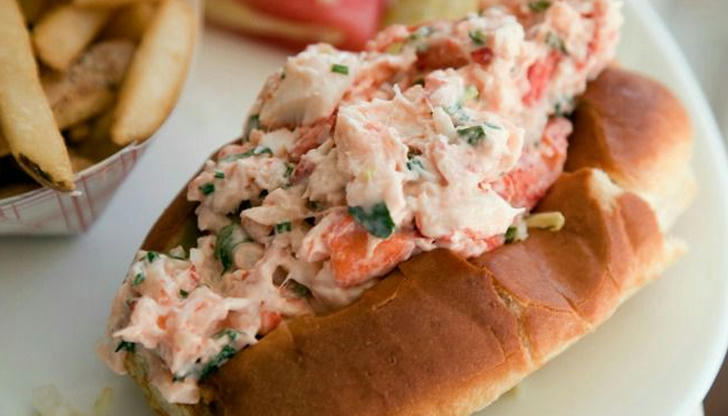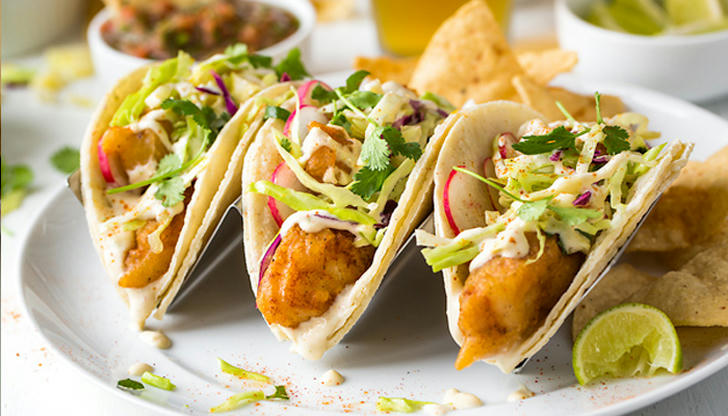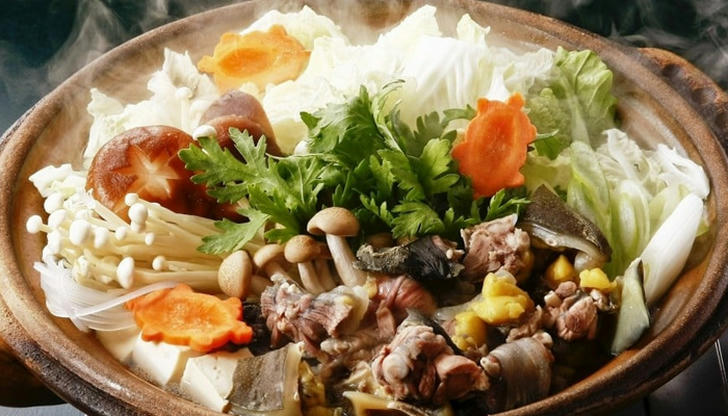Beyond the Burger: Exploring Delicious & Creative American Regional Cuisine
American cuisine is as diverse as the country itself. From the bustling streets of New York City to the quiet coastal towns of Maine, food has always been a reflection of the diverse cultures, landscapes, and histories that make up the United States. While burgers and fries often steal the spotlight, the true beauty of American food lies in its regional variations. In this article, we’ll take a journey beyond the burger, exploring some of the most delicious and creative regional dishes across America. From the heart of the South to the fresh flavors of the West Coast, let's discover what makes each region's food unique and irresistible.

1. The Roots of American Regional Cuisine
Historical Influences
American cuisine has evolved over centuries, shaped by various historical influences. Native American cooking laid the foundation for many regional dishes, especially with ingredients like corn, beans, squash, and wild game. European settlers brought their culinary traditions, while African slaves introduced rich, flavorful techniques such as frying and slow-cooking. In the 20th century, waves of immigrants from around the world added their spices, herbs, and cooking styles to the melting pot that is American cuisine.
Geography and Climate
The geography and climate of each region also play a significant role in shaping regional dishes. For instance, coastal regions like New England rely heavily on seafood, while the Midwest, with its vast farmland, is known for hearty comfort foods like casseroles and roasted meats. In the Southwest, the dry climate and access to chili peppers and beans have influenced a bold, spicy style of cooking that is emblematic of the region.
The Impact of Immigration
Immigration has been a driving force in the diversification of American food. From the Italian influence on pizza and pasta in the Northeast to the Asian flavors that have come to define West Coast cuisine, each wave of immigrants has contributed to the culinary richness we enjoy today.
2. Iconic Regional Dishes Across America

Northeast: New England and Beyond
Clam Chowder: A quintessential New England dish, this creamy, comforting soup made with clams, potatoes, onions, and celery is perfect for chilly days by the sea.
Lobster Rolls: In Maine, fresh lobster meat is served in a soft roll, often with a dollop of mayonnaise or melted butter, making for a decadent, seafood-lover’s treat.
Apple Pie: While apple pie is often considered a national dessert, New England is famous for its version, made with crisp apples and a buttery, flaky crust—often enjoyed with a scoop of vanilla ice cream.
Southern Comfort: Soul Food and More
Fried Chicken: Known for its crispy coating and tender meat, fried chicken is a Southern staple. It’s often served with mashed potatoes, coleslaw, and biscuits.
Biscuits and Gravy: A hearty Southern breakfast of fluffy biscuits drenched in creamy sausage gravy is the perfect way to start the day.
Gumbo and Jambalaya: These Louisiana specialties combine rich, spicy flavors with a mix of seafood, sausage, and rice. Gumbo is a thick, stew-like dish, while jambalaya is a rice dish with a similar mix of ingredients.
Pecan Pie: A Southern classic, pecan pie is made with a rich filling of brown sugar, butter, and roasted pecans, offering a sweet and nutty end to any meal.
Midwest: Heartland of Comfort Foods
Chicago Deep-Dish Pizza: This iconic pizza features a thick, buttery crust filled with layers of cheese, tomato sauce, and toppings. Unlike traditional pizza, it’s more like a savory pie.
Casseroles: The Midwest is known for its hearty casseroles, which often combine ingredients like potatoes, meat, cheese, and vegetables. A classic example is tater tot casserole.
Walleye Fish: A freshwater fish native to the Great Lakes region, walleye is often pan-fried or grilled and served with sides like corn or coleslaw.
Southwest: Bold Flavors & Tex-Mex
Chili: A rich, spicy stew that’s typically made with beef, beans, tomatoes, and chili peppers. Variations include Texas chili, which is made without beans, and other regional takes that emphasize heat.
Barbecue Brisket: A Texas classic, barbecue brisket is slow-cooked to perfection, often smoked for hours, and served with tangy barbecue sauce.
Tamales: A beloved dish in the Southwest, tamales are made with masa (corn dough) stuffed with meat, cheese, or vegetables, wrapped in corn husks, and steamed.
West Coast: Fresh & Light

Fish Tacos: A popular West Coast dish, fish tacos are made with grilled or battered fish, served in a soft tortilla with fresh salsa, avocado, and a squeeze of lime.
Avocado Toast: This California-inspired breakfast trend has become a national favorite. Toasted bread is topped with mashed avocado, often garnished with a poached egg, radishes, and chili flakes.
Cioppino: A seafood stew from San Francisco, cioppino is made with a variety of fresh fish, shellfish, and tomatoes, all simmered together in a savory broth.
Pacific Northwest: Seafood & Farm-to-Table
Salmon: Known for its wild-caught variety, Pacific salmon is often grilled, smoked, or served in dishes like salmon chowder.
Dungeness Crab: Found along the Pacific coast, Dungeness crab is sweet and tender, often enjoyed in crab cakes or simply boiled with butter.
Marionberry Pie: Unique to the Pacific Northwest, marionberries are a type of blackberry that make a delicious, tart filling for pies and other desserts.
3. Unique Regional Ingredients
Each region in America boasts unique ingredients that define its cuisine. In the South, you’ll find okra, a key ingredient in gumbo, while the Midwest is known for its wild rice and root vegetables. California is home to abundant avocados, which make their way into everything from salads to smoothies, while the Pacific Northwest uses fresh seafood like salmon and Dungeness crab.
Spices and herbs also vary across regions. In the South, you’ll find bold Cajun and Creole seasonings, while in the Southwest, chili peppers and cumin dominate the flavor profile. In the Northeast, Old Bay seasoning is a favorite for seafood dishes, and the West Coast loves its fresh herbs like basil and parsley.
4. The Revival of Regional Cuisine
Farm-to-Table Movement
In recent years, the farm-to-table movement has helped revitalize regional cuisines, with restaurants focusing on using locally-sourced ingredients to create dishes that are reflective of their surroundings. This movement has made regional cooking more accessible and encouraged people to embrace the flavors of their local communities.
Modern Twists on Classics
Chefs across the country are also adding modern twists to traditional regional dishes. Think gourmet versions of fried chicken or innovative takes on classic chili. These creative variations bring new life to beloved dishes while honoring their regional roots.
Food Tourism
Food tourism has surged, with travelers seeking out regional culinary experiences. From barbecue tours in Texas to clam chowder samplings in Boston, people are exploring the diverse tastes of America. This trend has increased awareness of regional cuisine and brought new appreciation to local specialties.

5. The Future of American Regional Cuisine
Fusion Trends
Fusion cuisine is on the rise, with chefs blending traditional regional dishes with international flavors. For example, you might find Southern BBQ paired with Asian spices or a New England lobster roll with a Japanese twist. This fusion not only introduces exciting new flavors but also celebrates the diversity of American food culture.
Sustainability in Regional Cooking
As sustainability becomes increasingly important, many chefs are focusing on sourcing ingredients responsibly. This includes using more plant-based ingredients, reducing food waste, and supporting local farmers. These practices are shaping the future of American cuisine and helping preserve regional food traditions.
Exploring Regional Food Beyond the Restaurant
With the rise of food blogs, cookbooks, and online cooking classes, regional American cuisine is more accessible than ever. Home cooks can recreate iconic dishes in their own kitchens, bringing a taste of different regions into their homes.
Conclusion
American regional cuisine is rich, diverse, and full of creativity. From the comforting soul food of the South to the fresh seafood of the Pacific Northwest, there’s a whole world of flavors waiting to be explored. The next time you crave something beyond the burger, try diving into the regional dishes that define each corner of the U.S. Each dish tells a story, reflecting the history, culture, and ingredients of the region it comes from. So, get out there and explore the delicious diversity of American cuisine—you won’t regret it!
